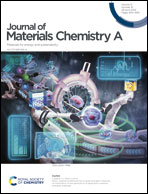Doping engineering of phosphorus-based polyanion-type cathodes for sodium storage: a review
Abstract
Phosphorus-based polyanionic compound cathodes have attracted significant interest due to their promising thermal stability and high potential for use in sodium-ion batteries (SIBs). Doping engineering has emerged as an effective approach to address the key challenges faced by these compounds, namely, poor conductivity, sluggish dynamics, and limited theoretical capacity. This review commences with an overview of polyanionic materials featuring various phosphorus bases. Subsequently, the critical aspects of doping engineering have been elucidated, focusing on factors such as the ion radius similarity, lower alternative potential energy, appropriate valence, and solid solubility. These factors are explained by electron cloud interactions, ion polarization, and orbital hybridization. This review emphasizes the profound effect and underlying mechanism of doping engineering in enhancing the performance of cathodes, drawing insights from crystallography and dynamics. Enhanced electrochemical activity, improved electron conductivity, accelerated ion transfer kinetics, and enhanced structural stability can be attained by activating inert sodium sites, modifying the lattice structure and electronic configuration, and preventing unwanted phase transitions. This review is expected to serve as a valuable resource for advancing doping engineering strategies to develop high-performance polyanion-type cathodes for SIBs.

- This article is part of the themed collections: Journal of Materials Chemistry A Recent Review Articles and Journal of Materials Chemistry A HOT Papers


 Please wait while we load your content...
Please wait while we load your content...